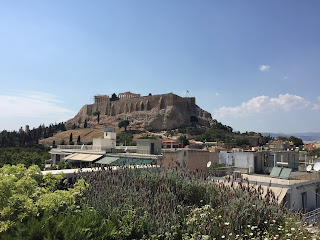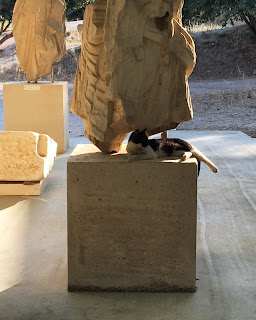Melina Mercouri Monument.
Melina Mercouri was a Greek actress, singer and politician.
As an actress, Mercouri made her film debut in Stella (1955) and met international success with her performances in Never on Sunday (1960, with future husband Jules Dassin), Phaedra, Topkapi and Promise at Dawn. She won the award for Best Actress at the 1960 Cannes Film Festival. She was nominated for an Academy Award, a Tony Award, three Golden Globe Awards and two BAFTA Awards.
A political activist during the Greek military junta of 1967–1974, Mercouri became a member of the Hellenic Parliament in 1977 and became the first female Minister for Culture of Greece in 1981. In 1983, Mercouri proposed the programme of the European Capital of Culture, which was established by the European Union in 1985.
Mercouri was a strong advocate for the return to Athens of the Parthenon Marbles, which were removed from the Parthenon and are now displayed in the British Museum in London. Mercouri died on 6 March 1994 at Memorial Sloan Kettering Cancer Center, New York City, from lung cancer. She was survived by her husband, Jules Dassin. She had no children. She received a state funeral with Prime Minister' s honors at the First Cemetery of Athens four days later. The Melina Mercouri Foundation
was founded by her widower. After her death, UNESCO established the Melina Mercouri International Prize for the Safeguarding and Management
of Cultural Landscapes (UNESCO-Greece) which rewards outstanding
examples of action to safeguard and enhance the world' s major cultural
landscapes. (By Wikipedia) |






























No comments:
Post a Comment